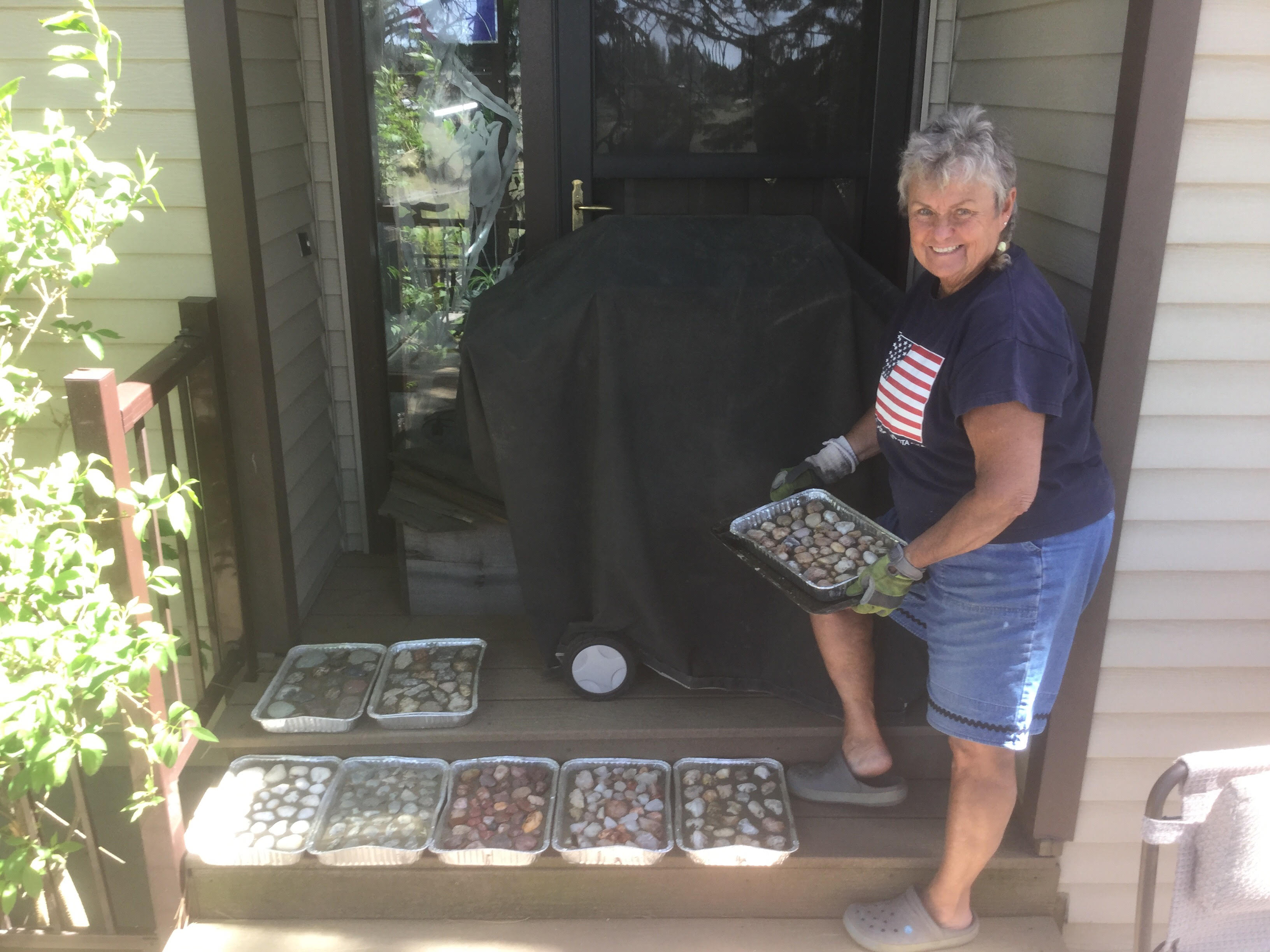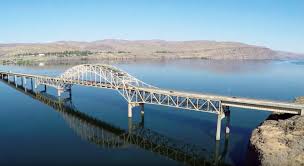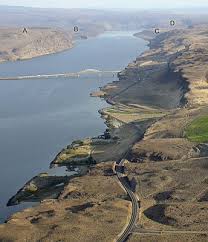
Category Archives: Serendipity
Friday Serendity

Friday Serendipity

Bet you belong to another genealogical society besides the Washington State Genealogical Society, right? Is your society thriving or struggling……….. maybe yes in one area and no in another? The Federation of Genealogical Societies (www.fgs.org) has announced the launch of their Society Management webinar series which began on July 20, 2017. This series of free events will bring a much-needed aspect to the array of learning opportunities currently provided in the genealogical community; focusing solely on the leadership and management of non-profit societies. The August webinar will feature David Rencher, CG, presenting on the best practices…and challenges…surrounding the nominating committee. They are schedule the third Thursday of every month, 7:00pm CDT, so set your course for August 17th. Unless your society does not need help with a nominating committee???
Today’s Serendipity Humor:

Friday Serendipity

This is Part 3 about Mason City, built to house the workers on Grand Coulee Dam, and their local company-published newspaper.
Interesting quotes:
“Up to 1928, a million dollars has been expended in various surveys to where the dam should be built.” (Folks, that is $13,955,606.94 in 2017 dollars!! Nearly fourteen BILLION…just to find the best/correct site.)
“Air is a major item used in the construction of Grand Coulee. Nearly 3,000,000 cubic feet of air is being used daily to run the jackhammers, bit sharpeners, forges, and numerous other devices.”
“Tools don’t cause accidents; it’s the men who use them.”
The Mason City theater in August 1935 was showing the film, Call of the Wild, with Clark Gable and Loretta Young.
Produce ads in 1935 in Mason City grocery stores:
- Thompson Seedless Grapes – #3 for 10 cents
- Tomatoes – 2 for 5 cents
- Watermelon – 1 cent per pound
- Hamburger – 12 cents per pound
- Weiners – 15 cents per pound
- Eggs – 21 cents per dozen
- Brown Sugar – #1 package for 5 cents
- Peanut Butter – #1 glass jar for 17 cents
- Lettuce – 2 heads for 7 cents
(Let us do remember that the average weekly wage for a worker in 1935 was $12.00. Likely the Grand Coulee Dam workers got a bit more.)
May 13, 1936: “The payroll this week: 347,624 checks issued for over $6,000,000.” (I divided that out; it comes to $17.26.)
And there was this cute joke: “Without doubt woman is the eternal question. It may also be added that man is eternally finding the wrong answer.”
Did one of your ancestors work on the building of Grand Coulee Dam???
Friday Serendipity

Con su permisio (with your permission), I’d like to continue with snips from the M.W.A.K. Columbian, the newsletter of the Mason Walsh Atkinson Kier Company, builders of Grand Coulee Dam, for their employees housed in the company town of Mason City.
One issue featured a list of Ways To Keep From Growing Old:
(Remember, this is advice for the workers on the dam.)
- Don’t wear your safety belt.
- Do walk under overhead swinging loads.
- Do put your hand on a roller under the conveyor belt.
- Do talk back to one of our local minions of the law.
- Do step in from of a “cat.”
- Do handle electrical fixtures with wet hands.
- Do ignore the blasting signal whistles.
- Do eat with your knife.
- Do neglect to get prompt first aid when you’ve had an accident.
- Do not pay close attention to what you are going and what is going on around you.
This bit of sage advice was followed by jokes: Teacher: “Spell straight.” Johnny: “S-T-R-A-I-G-H-T.” Teacher: “Good! Now what does it mean?” Johnny, “Without Ginger Ale!”
Little Mary comes home from Sunday School and was asked by her mother what she had learned. Mary replied, “Oh, we learned all about King Solomon and his cucumber vines.”
Friday Serendipity

Couple of years ago, when the WSGS confernce featured David Rencher and was in Ellensburg, I took the opportunity to visit the Central Washington Branch of the Washington State Archives. While there I scanned through whatever looked interesting to me.
The M.W.A.K. Columbia (the Mason Walsh Atkinson Kier Company, builders of Grand Coulee Dam) was a newsletter for the citizens of Mason City. This city was built for the workers and their families. The first issue announced a contest with prizes of $1 up to $10. The contest asked for “a list of the four most dangerous hazards which you have observed and suggest how you would correct each of them.” (Meaning working conditions. Never found the results.)
That issue also touted that “Mason City, only three months ago a sage brush waste is now an ultra modern city with 64 homes, businesses, a soda fountain, a bank and a general store.” And “free typhoid fever inoculations offered!”
Another item: “The workers’ payroll runs to $121,000 per week…mid Feb to mid-Mar there were 3218 employees…and 157 accidents, including two fatal ones.”
The April 1935 issue featured an anatomical drawing showing the workers where the pressure points were on the human body to use in an accident to stop the bleeding.”
Will continue with this theme next week………….
Friday Serendipity

Idaho is one of our nearest neighbors and we in Eastern Washington travel back and forth to Idaho sometimes daily. The other day I saw a list of Idaho Place Names and jotted down the ones in the Idaho Panhandle….nearest to us. Enjoy…and bet you’ll be surprised at some of these.
Sandpoint — In 1809 David Thompson mentions a point of sand here in his journal; a white settlement dates there to 1880.
Rathdrum — Originally named Westwood but there were too many of that name so Rathdrum was the name of the Irish birthplace of an elderly resident in 1881.
Athol — Said to have been named for an Indian chief in 1895.
Hayden — In 1878 Matthew Heyden and John Hager were playing cards and the winner of the hand got to name the lake. Guess who won?
Coeur d’Alene — Name give to the Indians in the area by French fur trappers and traders; had something to do with “heart.”
Priest Lake — Was first named Lake Roothaan in honor of Father John Roothaan, a Jesuit, and renamed in 1890.
Post Falls — Named in 1887 for Frederick Post’s mill.
Harrison — Named in 1891 for President Benjamin Harrison.
Kellogg — Was first named Milo where Noah Kellogg found ore; in 1887 was renamed to honor him.
Wallace — Named in 1888 for Col. W.R. Wallace, owner of the mine.
Mullan — Named in 1886 for John Mullan.
Moscow — Named for Moscow, Pennsylvania, AND Moscow, Iowa. “Moscow is from the Finnic tongue signifying “place for washing clothes.”
Source: Idaho Place Names: A Geographic Dictionary, by Lalia Broone, 1988, accessed at the Hayden Lake Public Library, Genealogy Collection.
Friday Serendipity

*** Surname fun
*** Priceless
*** Washington Beach Trivia
Have you a documented marriage like this one: Arnold FRANCIS married Frances GATEWOOD ca 1720 in Virginia. So she was Frances FRANCIS. Interesting, no?
**************************
Civilization in 2017- this is priceless!
� Our Phones – Wireless
� Cooking – Fireless
� Cars – Keyless
� Food – Fatless & Tasteless
� Tires -Tubeless
� Dress – Sleeveless
� Youth – Jobless
� Leaders – Shameless
� Relationships – Meaningless
� Attitudes – Careless
� Babies – Fatherless
� Feelings – Heartless
� Education – Valueless
� Children – Mannerless
We are-SPEECHLESS,
Government-is CLUELESS,
And our Politicians-are WORTHLESS!
I’m scared – Shitless!
****************************
At the Coastal Interpretive Center, Ocean Shores, Washington, I picked up several leaflets to teach me more about the history of the coast. One was Native Stories of Pacific Northwest Cataclysmic Events and gave the Native oral tradition stories of the pre-history event, the 1700 Cascadia tsunami. This event affected the entire coast from Puget Sound to Northern California and changed the coast line to what we know today.
Another leaflet was about the Brown Pelicans of the Beach. These four feet long birds are gregarious and like to congregate in flocks of 50 or more. They are the most skillful of the diving birds, folding their wings and zooming into the ocean, thus providing a wonderful spectacle for bird watchers.
One last leaflet was The Captivating Sand Dollar. The caution given in the leaflet was to never pick up shells that are furry green or brown in color as that indicates that the Sand Dollar is still alive. The many legends regarding the pattern on the top of a Sand Dollar mostly have a religious connotation. In reality, the pattern of the five petals are the locations of hollow filters that the creature uses to breathe. The most natural way to preserve your Sand Dollar is to put it outside int he full sun until it turns bright white in color……but beware of seagulls stealing them!
Serendipity Friday

*** Washington Road Signs
*** Cooperation between Genealogical & Historical Societies
***Don’t Kick These Rocks!
***What To Do With Your Rock Collection
Recently I drove from Port Angeles down to the Bainbridge-Seattle ferry. Saw two most interesting signs along that route. One was a highway department Tourist Activities sign showing three things: a distillery, a winery and a brewery. A better sign was a bit further along. This was one of those we-sponsor-road-clean up signs and was from the Geezers of Fury Bicycle Club. Liked that one way better.
&&&&&&&&&&&&&&&&
Chatting recently with Ginny Majewski and Roberta Griset (current and former Clallam County Gen Society presidents), we talked at length on the topic of the clear need for all museums, genealogical and historical societies in a given region to co-operate in their endeavors to both preserve history and serve the public. Ginny explained that there are eleven similarly-minded groups on the Peninsula and that CCGS is on the road to establish co-operating between them all. Shouldn’t this be a priority in your area?
&&&&&&&&&&&&&&&&&&&&&
Smack-dab in the middle of Washington sits something you’ve zoomed past several dozen times without stopping. Just a mile north of Vantage is the Gingko Petrified Forest and Interpretive Center. This unusual forest on its 7500 acreas but they are all fossilized trees, the largest stone forest in the world. When you take the 3/4-mile walk along the Trees of Stone Interpretive Trail, you’ll see examples of more than 200 species of fossilized trees including Douglas fir, spruce, elm and the ginkgo, the rarest form of fossilized wood. And it’s a free stop!!
&&&&&&&&&&&&&&&&&&
Are you like me and pick up a rock or two from places you’ve traveled to visit? We even brought home a piece of granite from the Three Gorges Dam area in China in our suitcase! But then you’re confronted with what to do with those rocks. May I offer my idea? Make stepping stones for your garden!

Get some 9×13 aluminum cake pans, a bag of Quikrete, buckets for water and mixing, gloves and (most importantly) your rock collection. I spread an old tarp over the picnic table, had my rocks ready, mixed 4 soup cans of concrete mix to 3/4 can of water in a bucket and then dumped it into the cake pan. I “puddled” it with a flat piece of wood. The tray should be about two inches full. Then I placed my rocks. If it’s too soupy, they will sink out of sight. If too dry, they won’t seat well. Let them sit several days before turning them out and then several days more to ensure that they are thoroughly dry. One bag of mix made eight stepping stones. Next I’ll have my scratcher and hose ready and scratch up soil/mud in the area where I want the stone and settle it in good and tight. It will hold when the soil/mud dries. Go for it! It is a fun project.
Serendipity Friday

Something rather different today. Few days ago I first drove west over the Vantage Bridge and then drove east coming home. I took the top photo and spent a few miles thinking about perspective.

I’ve flown over the Vantage Bridge and I’ve boated under the bridge. Looking on Google for different-angle photos, I found these two:


As I drove the 140 miles from Vantage on home to Spokane, thinking about perspective, I thought about how different the bridge looks from up high, from looking east, from looking west and from looking north, and from looking up (as we boated under it). Same bridge; different perspective.
Applying this to genealogy, the “bridge” for us is our current genealogical problem. Have we looked at it from all possible angles?? Some of those angles might be looking forward in time to him/her (as starting with him/her as a child) or looking backward in time to him/her. How about looking through the eyes of his parents? His siblings? His/her children? His employer? His military leader?
Perspective can make a “bridge” of a difference. Must keep that in mind.